If you've ever been to the Caribbean, you've most likely seen plantain trees on the side of the road! This is because plantains are a popular food staple all across the Caribbean, making it one of the most favored and popular vegetables in that area! Definitely NOT to be confused with bananas, plantains are not sweet, nor are they soft or yellow inside like bananas are. Think of a plantain more like a potato: you boil it, you mash it, and you add salt to it – it's a starchy plant and should be treated as such. Learning how to grow plantains is fairly easy as they don't require a lot of maintenance, and often times, are grown just like banana trees!
So if you went to the store and got some “long bananas” that still haven't ripened in weeks, that's probably because you've picked up plantains instead! Keep reading to learn how to grow plantains in your garden!
How to Grow Plantains
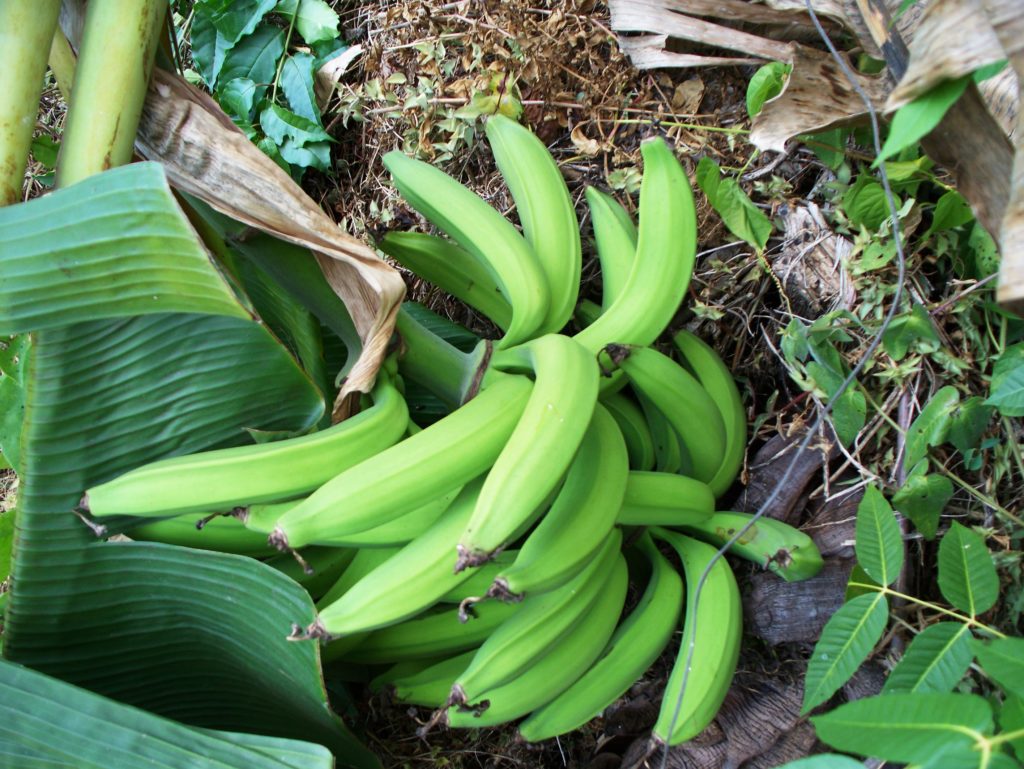
The flowers of the plantain tree are produced from the pseudostem which develop into a big cluster of hanging fruit.
Climate:
If you want to grow plantains, you'll first need to live in a tropical or subtropical climate. Those living in USDA zones 8 through 11 should successfully be able to grow plantain trees in their gardens! Alternatively, you could also grow plantains in a greenhouse, provided that there is enough sunlight and heat!
History of the Plantain:
Before we get into the technicalities of growing plantains, let's take a quick look at their history! Plantains have been cultivated for thousands of years and their origin seems to be the Malaysian peninsula, New Guinea, and Southeast Asia. These trees can reach a height of 7 to 30 feet, depending on many factors such as variety, amount of sun, soil, and overall climate. In fact, plantains are a hybrid of two species of banana: Musa acuminata and Musa balbisiana. Unlike bananas though, plantains are never eaten raw, but always cooked the same way you would cook a potato!
Planting Plantain Trees:
- Plantain trees are grown from long, 12-15 foot underground rhizomes. If you choose to grow plantains from rhizomes (same idea as growing from seeds), you'll need to dig a very large hole. We recommend purchasing a small plantain tree to ensure good, healthy growth and avoid any future growing problems.
- This in turn yield some very large and impressive leaves (about 9 feet in length and 2 feet across).
- Plant the tree in well draining soil and in full sun.
- Protect the newly growing plant from high winds and make sure to leave 4-6 feet of space in between the tree and other plants.
- Dig a hole that's as deep as the root ball.
- Add about 4-6 inches of organic mulch around the tree. Spread the mulch all around the tree to keep the soil moist.
Caring for Plantain Trees:

- Plantain trees thrive in moist (not soggy) soil, so be sure to always check the soil and water regularly. Do not let soil dry out!
- If there are cold fronts, be sure to protect the tree by covering it with a blanket, adding heaters or lights, or bringing it indoors if in a pot.
- Plantain trees are very susceptible to the cold, so protecting them from dropping temperatures is crucial.
- The rhizome can actually survive temperatures as low as 22 F (-5C), but the rest of the plant will die.
- Fertilize your plantain tree once a month during the summer with a slow release fertilizer of 8-10-8.
- Plantains are actually heavy feeders and a mature tree will need about 1-2 pounds. Do this by spreading out the fertilizer in a 4-8 foot radius around the plant and then lightly working it into the soil.
- Use gardening pruners to remove suckers. This will ensure that all the energy gets diverted to the main plant.
- If you are propagating a new plant, leave only one sucker onto the plant and let it grow on the parent plant for 6-8 months before removing it completely.
How Long Does it Take For a Plantain Tree to Make Fruit?
- Plantains are usually ready for harvest anywhere from 14 to 20 months depending on the climate and other factors.
- Flowering usually happens within 10-15 months, while an additional 4-8 months is needed for fruit it develop and ripen.
- To harvest, simply cut off the entire bunch from the top of the stalk. Use a sharp blade to do this, such as a machete.
Like this post? Share, Pin, and Comment Below 🙂
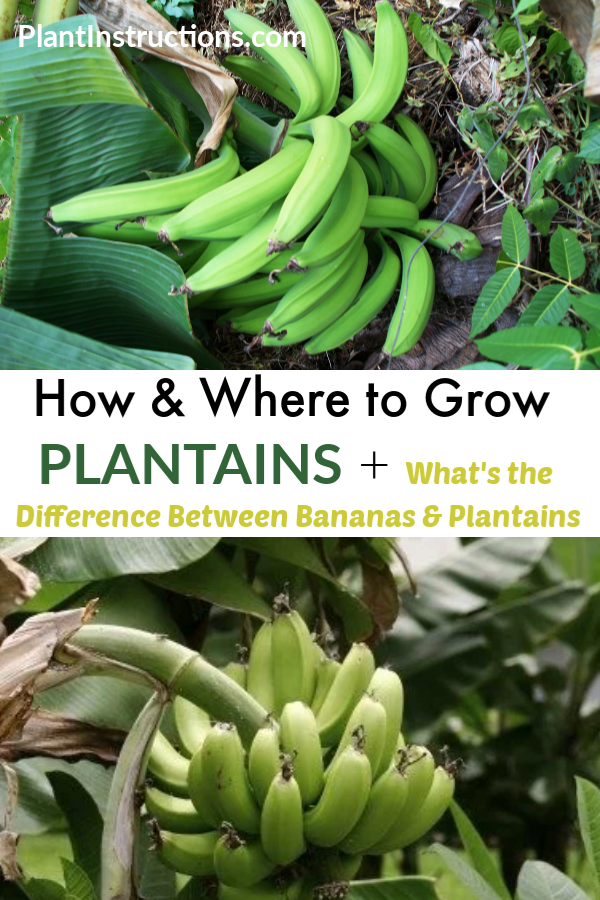

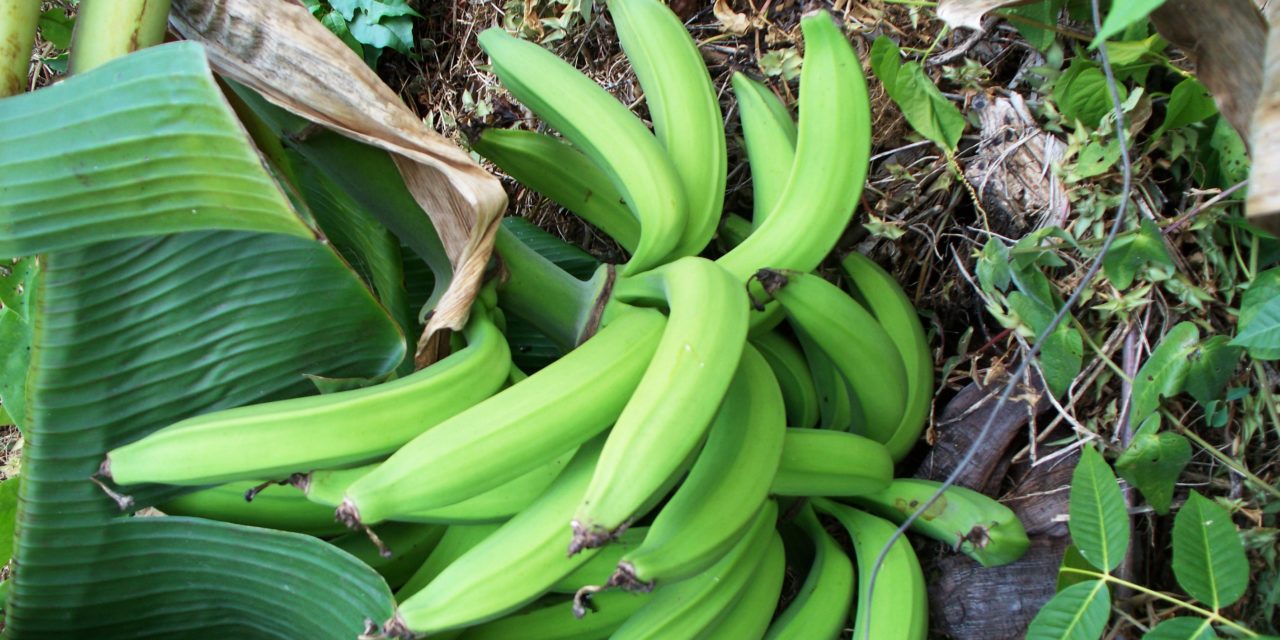
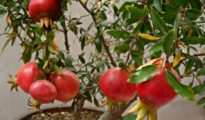
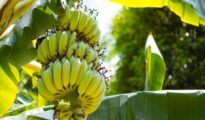
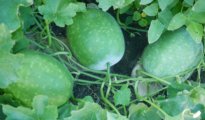
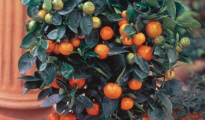














Maybe you can help me. Every says how to harvest the plantains but nobody says when. They might say after so much time but that doesn’t help. Am I suppose to wait until they yellow or start to darken? Mine are starting to get some long dark streaks down them. Have I waited too long? How can I tell by looking at them that they are ready? Thanks
Hi William,
Harvesting plantains all depends on a number of different factors such as general climate, variety of plantain, and when it was planted. It’s hard to tell without seeing the plant itself, and even harder to give a definitive time. But what we can tell you is this: people harvest plantains at different times for different reasons. Some wait for quite some time until they turn brown, while other pick them while green. For longer storage, pick while green, but if you’re looking to use them for cooking, pick them while yellow or brown.
By now you may already know, but when they are green, you can cook different ways like boiling, frying or mashing them up. Once they turn yellowish brown, even with black spots, they are sweet. Simply cut up and fry slices. Or boil until soft and add cinnamon.
It is ok to harvest your plantains when they have reached a size that desirable to you even if they are still green. This ensures a longer time you have before they all ripen at once. Me personally, I prefer to harvest when at least one from the bunch has started to yellow.
If it’s after a year after planting best assume they are mature they can ripe on the tree or can be cut and made to ripe
Plantain can definitely be sweet and is not like a potato. Only tasteless bland plantain is not sweet. I’ve been cooking and eating it my entire life when green it can be made into chips and fried, when ripe it can also be fried. Anyone who settles for bland tasteless plantain is missing out and needs to shop somewhere else.
Hi Bea,
Yes, you’re absolutely right! A good plantain is sweet and delicious, but is it like a potato in the way that it’s cooked. Meaning it can be mashed and fried 🙂
I’ll post this as a new Q here, about when to harvest. I have 2 trees which now has a bunch each in them in Australia. It’s been 6 months since they have come to become green, not yellow or brown, if so I’d harvest because I need plantain. It’s rainy season now (Mar to May). When do I harvest to get good plantains (before it ripens to a banana) since the time the flower started, which is now 6 months?
You should harvest plantains when they are plump. Where I’m from, they would cut the entire stem and leave then on until needed or you can remove each individually. You can let them ripe on the tree, but you don’t have to. They will ripe on their own off the tree. Good luck!
Hi, l just want to say you boil plantains when they are green or slice green plantains to make plantain chips. First peel the green skins off then slice in thin slices place in hot oil and fry till golden brown. Drain oil off, sprinkle with little salt and enjoy. When plantains skin turns yellow they are ripened. Pell skin off cut in 2halve horizontal and three slices vertical hot some oil, when hot place slices in oil till golden brown, drain on napkins ad wait a few minutes before eating. They are hot. When plantains skins turns yellow with… Read more »
Plantains are sweet and can be eaten raw when ripe. It’s definitely not like sweet potato it’s exactly like a banana only like a big brother you speak not from a intimate knowledge of this plant but from what you’ve read it seems